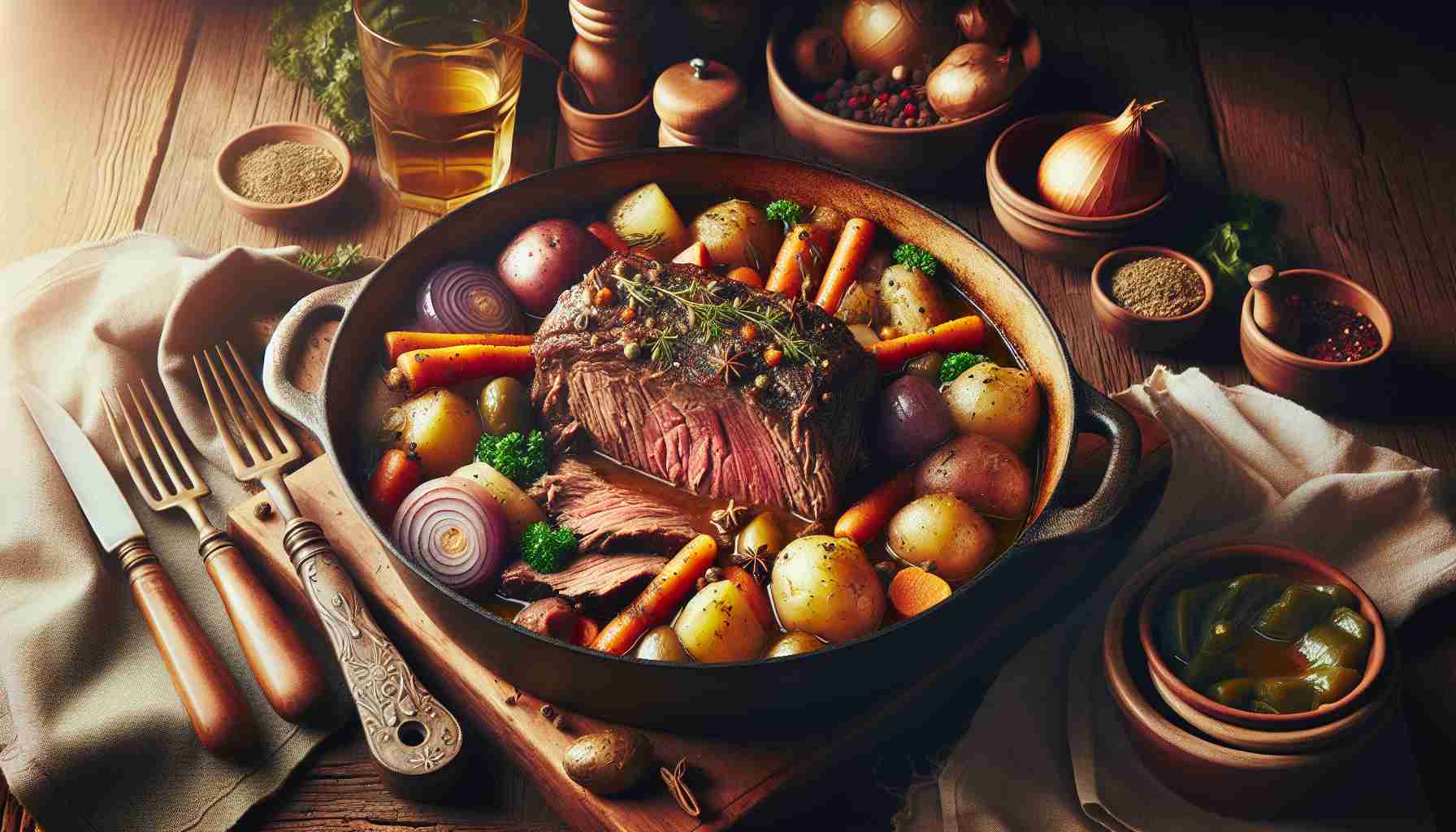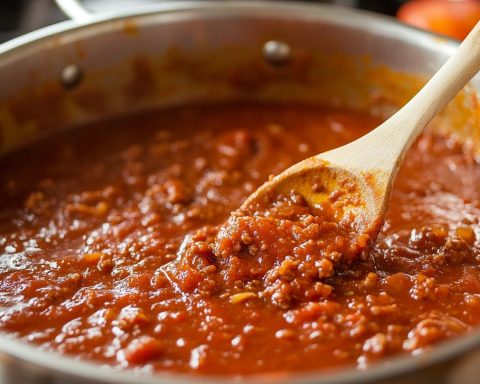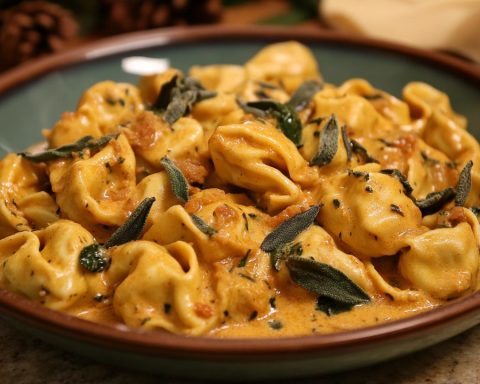In the heart of home kitchens across the globe, the pot roast stands as a testament to the magical art of slow cooking—a method that transforms simple ingredients into a melody of flavors. This dish invites whispers of tradition, each bite a journey back to days spent in cozy kitchens where family stories were exchanged and laughter echoed off the walls. With meltingly tender meat infused with the rich aroma of herbs and spices, this pot roast is a quintessential dish for intimate family dinners or festive gatherings during the cooler months. Its warmth and generosity make it a staple of hospitality, able to nourish both body and soul.
Ingredients:
– 3-4 lbs chuck roast, boneless
– 2 tbsp vegetable oil
– Salt and black pepper to taste
– 1 large onion, sliced
– 3 cloves garlic, minced
– 4 carrots, peeled and cut into large chunks
– 4 stalks celery, cut into large chunks
– 1 cup beef broth
– 1 cup red wine (optional)
– 3 sprigs fresh thyme
– 2 sprigs fresh rosemary
– 2 bay leaves
– 2 tbsp tomato paste
– 1-2 tbsp Worcestershire sauce
– 2 lbs potatoes, peeled and quartered
Instructions:
1. Preparation of the Roast: Begin by patting the beef roast dry with paper towels—this allows for a good sear. Generously season all sides with salt and black pepper.
2. Searing the Meat: In a large Dutch oven or heavy-bottomed pot, heat the vegetable oil over medium-high heat. Once hot, add the beef roast and sear on all sides until it develops a deep brown crust, about 4-5 minutes per side. Remove the beef and set it aside on a plate.
3. Building the Flavor Base: In the same pot, reduce the heat to medium and add the sliced onion, sautéing until translucent. Stir in the minced garlic and cook for about 30 seconds until fragrant.
4. Deglazing and Braising: Add the tomato paste and mix for a minute, followed by the beef broth and red wine. As it starts to simmer, use a wooden spoon to scrape up all the delicious browned bits from the bottom of the pot. This adds depth to your sauce.
5. Adding Vegetables and Herbs: Add the carrots, celery, and potatoes to the pot, nestling them around the roast. Introduce the fresh thyme, rosemary, bay leaves, and Worcestershire sauce. These ingredients blend to create a broth that is both fragrant and rich in flavor.
6. Slow Cooking to Perfection: Cover and transfer the pot to an oven preheated to 325°F (165°C). Let it cook for about 3-4 hours, checking occasionally to ensure the roast remains moist, basting with the pan juices if necessary. The pot roast is done when the meat is fork-tender and falling apart.
7. Serving the Dish: Remove the bay leaves and herb sprigs before serving. Carve the pot roast against the grain for maximum tenderness and serve with the vegetables and a ladle of the flavorful braising liquid.
Tips and Pairing Suggestions:
– Cooking Tip: If using a tougher cut such as brisket, increase the cooking time to ensure tenderness.
– Serving Suggestion: Pot roast pairs wonderfully with a side of creamy mashed potatoes or a crusty loaf of bread to sop up the rich juices.
– Wine Pairing: A robust red wine, such as a Cabernet Sauvignon, will complement the savory flavors beautifully.
This pot roast recipe combines the simplicity of home-cooked meals with an elegance that suits any occasion, making it a cherished centerpiece for gatherings big and small. Enjoy the comforting embrace of this dish as it brings warmth to your table.
Is Pot Roast the Ultimate Comfort Food or a Health Controversy?
Despite its reputation as a beloved comfort food, the pot roast isn’t without its share of controversies. Did you know that the dish’s humble origins and nutritional content can be points of debate?
1. Pot Roast Around the World: While pot roast is a staple in American kitchens, similar slow-cooked dishes exist globally. For instance, Italy boasts its own version known as “stracotto,” while the French have “boeuf à la mode.” These variations show how different cultures have embraced and adapted the concept of slow cooking meats with herbs and vegetables.
2. Health Considerations: Many question whether pot roast, often laden with fat and sodium, aligns with modern health trends. However, by opting for leaner cuts or trimming excess fat, one can make this dish healthier without sacrificing flavor. The use of fresh vegetables enhances its nutritional value, providing essential vitamins and fiber.
3. The Debate Over Ingredients: There’s an ongoing debate among enthusiasts about the use of red wine and Worcestershire sauce. Some purists argue for minimal ingredients, claiming they distract from the natural flavors of the meat. Others appreciate the depth these ingredients add.
4. A Historical Dish Revived for Modern Palates: Why has pot roast endured through generations? It’s arguably the nostalgic connection to family memories and the communal joy of sharing food. Yet, it’s also because chefs and home cooks continuously reinvent it, aligning it with current culinary trends and dietary preferences.
For more insights into global food traditions and recipes, visit BBC or Food Network. You’ll find endless inspiration to bring comforting and nutritious dishes to your table.








